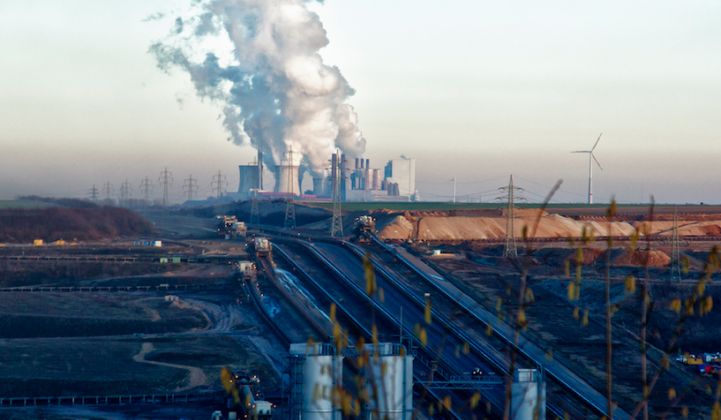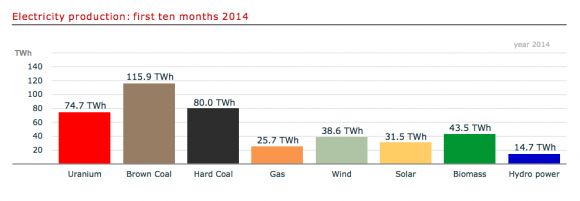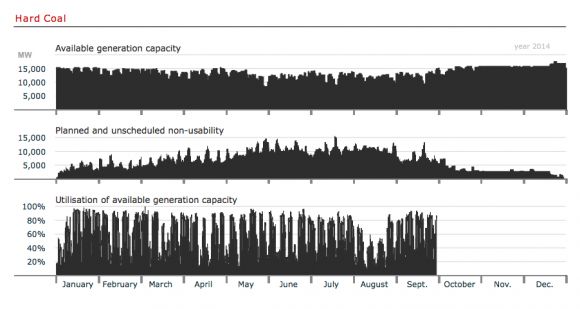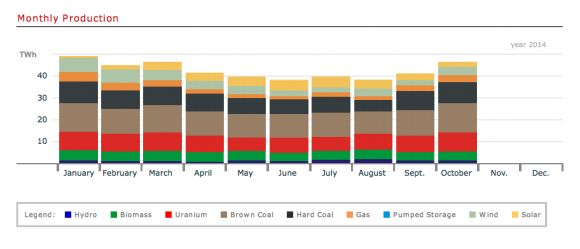Until recently, Germany was known as the undisputed leader in clean energy. But the country's legacy may be shifting.
Germany was one of the few countries in the world to take a no-excuses approach to developing renewable energy by creating a highly ambitious set of policies to promote localized, distributed generation. In many ways, the policies were a resounding success: the country sparked the modern solar industry; half of all renewables are locally owned; and traditional utilities are now transforming themselves into energy service companies focused on distributed generation and divesting from centralized fossil fuels.
But Germany is also facing some hard realities. Mounting legacy costs of feed-in tariffs, increasing electricity rates and rising CO2 emissions are raising a debate about the effectiveness of the country's energy transition.
Earlier this month, Dr. Bruno Burger of the Fraunhofer Institute released the latest data on Germany's electricity mix. It features 250 charts that illustrate every relevant yearly, monthly and daily statistic on the country's energy production for 2014.
What do the numbers tell us? There's something for both optimists and pessimists to rally around.
1. Net installed capacity numbers show just how much solar and wind Germany has on its grid.
2. But when considering yearly electricity production, coal is still winning out over everything.
3. Coal and nuclear baseload generation did decrease in 2014 in order to accommodate more wind and solar on the grid.
4. Hard coal plants saw radical variation in utilization rates, contributing to the strong decline in revenue among power-plant operators.
5. On June 6, 2014, Germany saw a record-breaking 212 gigawatt-hours of solar production -- around 18 percent of total generation that day.
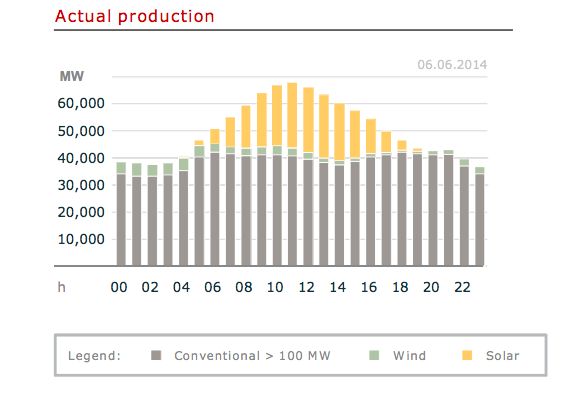
6. On December 12, 2014, wind hit a new record of 562 gigawatt-hours -- producing around one-third of total electricity that day.
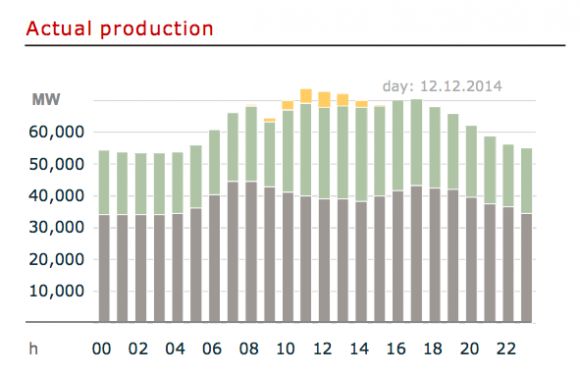
7. Despite those impressive records, solar and wind still followed biomass, coal and nuclear in monthly generation totals.
Optimists about Germany's situation would say these graphs are proof that renewables are wreaking havoc on the utilization and economics of fossil fuels, thus stimulating a business transition for large power companies.
Pessimists would point to the dominance of coal generation as proof that large amounts of solar and wind aren't enough to quickly derail entrenched fossil fuels, nor to make up for a phase-out of nuclear power.
However, realists would likely see both sides and agree with an energy expert like Vaclav Smil, who argues that true energy transitions do not happen in a decade.
"The historical verdict is unassailable: because of the requisite technical and infrastructural imperatives and because of numerous (and often entirely unforeseen) socioeconomic adjustments, energy transitions in large economies and on a global scale are inherently protracted affairs," writes Smil.
Germany might be moving faster than other countries. But it's also proving that energy transitions don't happen quickly, no matter how aggressive the policies.
"A world without fossil fuel combustion is highly desirable and, to be optimistic, our collective determination, commitment, and persistence could accelerate its arrival -- but getting there will demand not only high cost, but also considerable patience: coming energy transitions will unfold across decades, not years," Smil argues.
You can view the rest of Dr. Burger's charts here.
